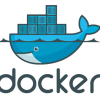Manage Docker Containers by shell without SSH Login
Basically, there are 2 options to control containers with shells without SSH login.
Option 1. Use -t (pseudo-tty) option without ssh
Example: Create a new nginx container named “webnode“, and run it interactively. By using “-t" option that simulates a terminal, you can use shell (bash) without ssh.
$ docker container run -it --name webnode nginx bashResult:
$ docker container run -it --name webnode nginx bash
root@43d69c39158d:/# ls
bin boot dev docker-entrypoint.d docker-entrypoint.sh etc home lib lib64 media mnt opt proc root run sbin srv sys tmp usr var
root@43d69c39158d:/#However, if you exit a container with the “exit" command, the container is stopped.
root@43d69c39158d:/# exit
exit
$ docker container ls
CONTAINER ID IMAGE COMMAND CREATED STATUS PORTS NAMESOption 2. Use bash without container down
Example:
1. Start the “webnode" container.
$ docker container start webnode
webnode
$ docker container ls
CONTAINER ID IMAGE COMMAND CREATED STATUS PORTS NAMES
43d69c39158d nginx "/docker-entrypoint.…" 9 minutes ago Up 17 seconds 80/tcp webnode2. With “docker container exec" command, you can add shell commands to the running “webnode" container.
$ docker container exec -it webnode bash
root@43d69c39158d:/# echo "Hi"
Hi3. Even though you exit the container, it is still running.
root@43d69c39158d:/# exit
exit
$ docker container ls
CONTAINER ID IMAGE COMMAND CREATED STATUS PORTS NAMES
43d69c39158d nginx "/docker-entrypoint.…" 10 minutes ago Up About a minute 80/tcp webnode







Discussion
New Comments
No comments yet. Be the first one!